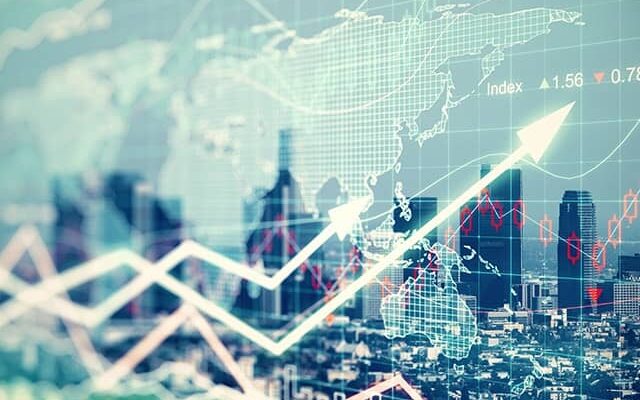(AOF) – Following discussions held in recent weeks, the French State and Eramet have agreed to an agreement on the treatment of SLN’s existing debt. This agreement will make it possible to neutralize the weight of SLN’s debt in the group’s consolidated accounts. The agreement includes three provisions. The State and Eramet have jointly decided to convert their existing loans from SLN into the form of a quasi-equity instrument.
The 320 million euros of existing State loans to SLN, currently consolidated as financial debt in the group’s accounts, will thus be transformed into quasi-equity, comparable in accounting terms to equity in Eramet’s consolidated accounts. .
Eramet will similarly convert the existing intra-group debt of €325 million using the same scheme. This conversion has no impact on the group’s consolidated accounts but allows pari passu treatment of the State’s and Eramet’s debts.
The Eramet group also reiterates its decision to no longer grant new financing to SLN, in order to preserve the group’s balance sheet. However, in parallel with potential financial support from the State and New Caledonian communities within the framework of the nickel pact in order to ensure the continuity of activity of the SLN, Eramet will continue to support the SLN operationally over the long term.
AOF – LEARN MORE
Learn more about Eramet
Key points
– Producer, created in 1880, of ores and alloy metals, world leader in manganese ore and ferronickel, 4th in zircon and titanium materials;
– Turnover of €5.4 billion, refocused on mines and metals – manganese for 59% of sales, nickel for 33%, mineral sands for 9%, lithium being under development;
– Sales made in Asia for 50% (including 20% in China), in Europe for 28% (including 6% for France), in South America for 12% and in North America for 6%;
– Business model based on the valorization of metals and minerals essential to economic development (manganese, nickel, mineral sands) and the energy transition (lithium, nickel/cobalt salts, battery recycling);
– Capital jointly controlled at 64.21% by the French State including STCPI (4%, Société Territoriale Calédonienne de Participation Industrielle, owned by the New Caledonian provinces), Cristel Bories being CEO of the board of 18 directors;
– Cleaned up balance sheet with debt leverage of 0.7 at the end of June 2023 and equity ratio of 33%.
Challenges
– Refocused strategy after the disposals of Auber & Duval and Eurasteel:
– grow in attractive businesses – manganese ores and mineralized sands,
– expand the portfolio in metals for energy transformation – nickel and cobalt salts and recycling of lithium ion batteries;
– Innovation strategy supported by the IDEAS center in Trappes and financed at 1% of revenues:
– deployed internally via the Data Factory: management by the mining 4.0 business units using data, additive production, robotization, IoT, artificial intelligence, etc.
– based on open innovation: challenges for young doctors, start-up competitions, university and scientific partnerships;
– Environmental strategy to contribute to carbon neutrality in 2050:
– 40% reduction in CO2 emissions in 2035, particularly in the decarbonization of metallurgical production and the rehabilitation of mining sites (residue management),
– circular economy and protection of water resources and air quality,
– increase to 40% in 2030, compared to 2019, of loans linked to sustainable development;
– World-class resource portfolio: manganese (Moanda in Gabon), nickel and nickel-cobalt (New Caledonia and Weda Bay in Indonesia), mineral sands (Senegal), lithium (Argentina and France) and battery recycling (France) .
Challenges
– Sensitivity to geopolitical risks in New Caledonia, Gabon and Senegal;
– Success of the cost reduction and production optimization plan in the face of a degraded market – fall in the selling prices of manganese and nickel, inflation in the price of inputs and logistical disruptions;
– Project progress:
– energy transition: pilot plant in France for battery recycling and, for 2024, launch of lithium production in Argentina and finalization of the study on nickel and cobalt at Sonic Bay,
– expansion of the portfolio: exploration of lithium brines in Chile and, in Indonesia, of nickel limonites.
Learn more about the Commodities/Metals sector
The multiple challenges of environmental criticality
It first refers to the supply and availability of different metals in the subsoil. The other determining element is demand. According to the International Energy Agency, lithium consumption will increase more than 40-fold by 2040. Copper is also the perfect example of this criticality. According to S&P Global, copper consumption will double by 2035, from 25 million tonnes per year to 50 million tonnes. However, investments in new mines are penalized by falling prices and rising financing and production costs. Shortages are therefore to be feared in ten or fifteen years. Finally, the mining industry will face growing opposition from populations because of its impacts (particularly in terms of waste and water pollution).
